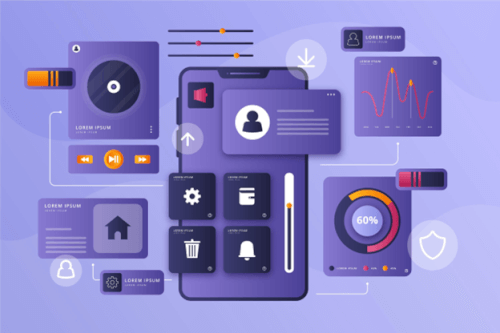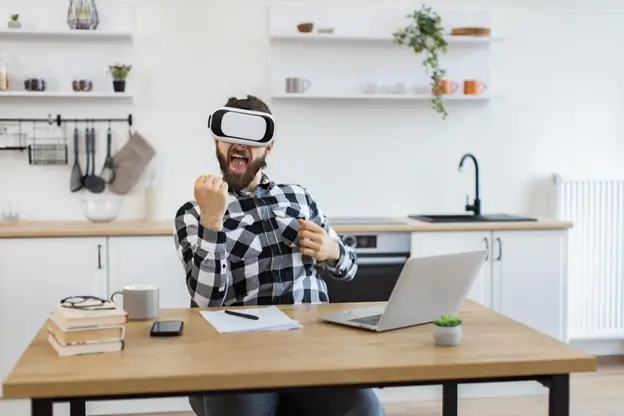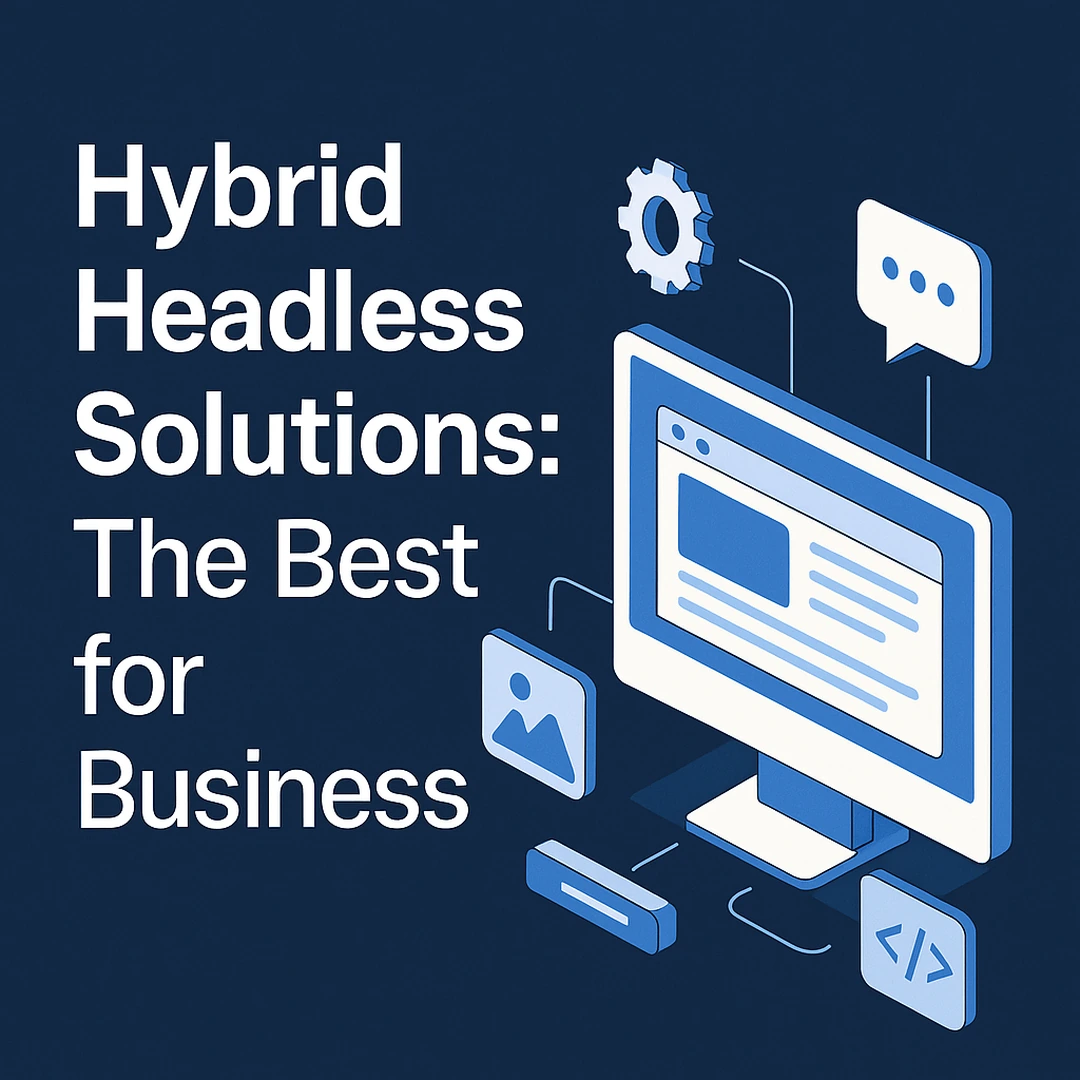Get your free consultation today!
Share with your Colleagues
Categories
ROI Calculator
Moonstone Interactive is the only San Francisco Bay Area web design firm and Internet Marketing expert that offers a free online ROI Calculator
Author: Steve Herz
.png?width=500&height=333&ext=.png)
In 2024, user experience design will enter a new era of innovation and creativity.
Get ready for a seismic shift in digital interactions. Emerging trends are poised to upend the way we experience technology. But is your business prepared to adapt to what's hot?
This year, we're going all out to make user experience design pop—think more straightforward, more captivating, and warmer interactions that include everyone.
Let's explore the most exciting UX design trends in 2024, which will make waves this year and beyond.
1. Voice User Interfaces
With Voice User Interfaces (VHI), the rules of tech interaction are evolving from scratch. As more people adopt smart speakers like Amazon's Alexa and Google Assistant, talking to our voice-activated devices has become second nature.
Imagine navigating apps or websites without lifting a finger—speak, and you find what you want. This hands-free convenience is a game-changer, especially when multitasking or on the go.
What's truly remarkable about VUIs is their ability to make technology more inclusive. For people with disabilities, voice commands open up a world of possibilities, making digital spaces more accessible than ever.
Plus, these emerging technologies are super fast. Typing a search or setting a reminder can take precious seconds, but a quick voice command is instant.
However, VUIs aren't without challenges. As voice recognition continually refines its precision, privacy considerations become increasingly pressing. What's the actual cost of our dependence on these systems?
Despite the challenges, the potential of VUIs is undeniable. Users need assurance that their conversations are private and not misused. However, the promise of VUIs to make technology more inclusive and the rapid advancements in voice recognition technology should leave us feeling optimistic about the future of tech.
2. Virtual Reality and Augmented Reality
Virtual Reality (VR) and Augmented Reality (AR) redefine how people interact with technology. These immersive technologies elevate user experiences beyond gaming.
VR is ultimately about sinking fully into an alternate reality. Picture exploring a museum from your living room or attending a virtual concert. In real estate, potential buyers can tour homes from anywhere in the world.
While we're still attached to the tangible, AR swoops in, adding an imaginary coat of knowledge to the authentic article. Imagine seeing how new furniture fits your home or getting real-time directions superimposed on your surroundings. Imagine if running errands or doing chores was enjoyable—AR makes that a reality.
The buzz around VR and AR has gone mainstream—what sparked this trend? Interactive formats and visually appealing graphics make information unforgettable and accessible.
VR and AR are not just buzzwords. They are the latest technologies transforming the way we interact with digital content. The potential of these technologies to turn the mundane into something special should leave us all excited about the possibilities.

3. Interactive 3D Visual Elements
Who says digital design has to be flat and lifeless? Interactive 3D elements inject a fresh dynamism that turns everyday interactions into genuinely immersive experiences.
Picture this: you're on an e-commerce site, and instead of just seeing flat images, you can rotate and zoom in on products, examining every detail like you're holding them.
Websites are also getting a boost. Interactive 3D animations that respond when you hover, click or drag make browsing more fun and intuitive. They guide you through the content and effortlessly highlight essential info. Add a pinch of 3D flair to your user interface, and suddenly, it looks sharp.
Of course, we need to balance all this eye candy with performance. High-quality 3D graphics can be heavy on resources, so UX designers must ensure everything runs smoothly.
4. AI Integrations
AI integrations transform user experience design, making interactions more innovative, personalized, and efficient. AI is incredibly cool tech, but what's more important is that AI-powered tools make such a massive difference in UX. The potential impact of AI on user experience is significant, as it can enhance personalization, streamline processes, and provide instant support, all of which elevate user satisfaction and engagement.
Personalization is a big win for artificial intelligence and its machine learning algorithms. Imagine a music app that knows your taste and suggests songs you'll love.
AI-powered tools are not just cool tech; these tools are a testament to the user-centric nature of modern UX design. The ability of AI to personalize user experiences and make interactions more enjoyable and relevant should make us all feel valued and understood.
AI-powered chatbots are another game-changer. From troubleshooting to answering questions, their dedicated customer support crew is always on call, responding in real-time to resolve issues ASAP. Thanks to their around-the-clock availability, anytime you need assistance, it's there.
Predictive text and search suggestions also improve user experience. AI anticipates what you're typing, speeding up your search and making it easier to find what you need. You'll barely notice the speed difference—in a good way—with apps and websites humming along smoothly.
5. Dark Mode/Light Mode
Dark and light modes have become must-have features in modern digital design because they give users control over their viewing experience.
Dark mode is a game-changer, especially for night owls or anyone who spends much time on their devices in low-light conditions.
Dark mode eases the bright glare from screens, making scrolling through social media or responding to emails at night much more relaxing for the eyes. It can also save battery life on OLED screens by using less power to display black pixels.
Conversely, light mode shines in bright environments, providing clear visibility and a straightforward look. It's perfect for daytime use, offering excellent readability and a familiar interface.
The real magic happens when users can effortlessly switch between these modes and customize their experience based on their preferences and surroundings.
They give people the power to directly shape their app or website experiences, resulting in longer engagement times and higher user satisfaction rates.
However, designing for both modes requires careful attention to contrast and readability to ensure that all elements are easily visible and the user interface remains intuitive. Businesses must address color contrast, readability, and user preferences when implementing dark and light modes to ensure a balanced and user-friendly design.
6. Mobile-First Design
With more people browsing the internet on their smartphones, designing for mobile is no longer optional—it's a must. This approach ensures that websites and mobile apps are smooth and intuitive on smaller screens, providing a top-notch user experience.
Starting with mobile-first design means focusing on the most critical elements first. It's a delicate dance: adding features without muddying the waters.
Successful designers know how to pare down the noise, leaving only the necessary content. So, what's the secret to making things tick on a tiny screen? Design and optimize everything to perfection.
One big perk of mobile-first design is better performance. Mobile users demand fast load times and quick interactions. By optimizing for mobile from the get-go, websites and apps become lighter and faster, improving user experience and satisfaction. The benefits of mobile-first design are clear, making it a crucial strategy for businesses looking to provide a top-notch user experience.
Plus, mobile-first design boosts accessibility. Designers think about touch-friendly elements, easy-to-read text, and straightforward navigation—perfect for users on the move. And let's not forget the SEO benefits; search engines love mobile-friendly sites.

7. Emotional Design
Emotional design creates connections between users and digital products by evoking positive feelings.
It's not just about functionality; it's about making users feel something—joy, trust, surprise, or even delight. When users respond emotionally, they're more likely to remember the experience and develop a stronger bond with the product or brand.
Think about apps or websites that greet you with a friendly animation or a witty message. These small touches can turn a mundane task into a pleasant experience. Emotional design focuses on these details, using colors, typography, and micro-interactions to create a mood or tell a story.
So what's the big deal? Crack the code on what makes users tick, and suddenly, your product becomes an indispensable friend–and an absolute pleasure to use. Positive emotions can lead to increased loyalty and word-of-mouth promotion.
Emotional design makes complex interactions more intuitive. For instance, a friendly onboarding process can ease users into a new app, reducing frustration and making the learning curve feel less steep.
8. Better Accessibility
Better accessibility means designing digital spaces that everyone can use, regardless of their abilities. Inclusivity means everyone gets to participate - no one's left behind. A seamless user experience is just that, seamless, and that's why this feature is vital.
Accessibility starts with thoughtful design choices. High-contrast colors make text easier to read for those with visual impairments.
Including alt text for images helps screen readers describe visuals to users who are blind. Keyboard-friendly navigation ensures that those who can't use a mouse can still navigate easily.
It's not only about visual impairments. Captions for videos or transcripts for audio content are crucial for users with hearing impairments. For those with cognitive disabilities, a clean, straightforward layout with clear instructions can make a significant difference.
Why bother with accessibility? What's in it for us? When you design a website or app accessible to everyone, you can expect a surge in engagement and loyalty from your customers—it's a win-win! Plus, legal requirements in many places mandate digital accessibility.
9. Cross-Platform UX
How about users switching seamlessly between devices? That's what cross-platform UX design is all about – making it happen smoothly on smartphones, tablets, desktops, or even smart TVs. The modern user demands a product that's a breeze to use every time and from every angle.
Imagine switching from your phone to your laptop and finding the same smooth interface and functionality. That soft, synchronized feel of using an app or site across different devices is the sweet spot of cross-platform UX.
But why does this matter? When everything flows effortlessly, users are far more likely to be satisfied. Users love it when they can pick up where they left off without hiccups.
Additionally, a uniform experience across platforms builds brand loyalty. When users know they can rely on a smooth, consistent interaction, they're more likely to stick with your product.
You have a finger on the pulse of their needs, allowing you to build something genuinely cohesive.

10. No-Code Tools
No-code tools allow designers to bring their visions to life without writing a single line of code. With these platforms, designers can stop dreaming and start building digital products that genuinely pop–and still manage to get the job done.
What if you can build a website or app by dragging and dropping elements? With Webflow, Wix, and Bubble in the mix, creating a website has transformed from a daunting task to a straightforward process.
Designers can now channel their energies into what truly matters: crafting mesmerizing user experiences and tuning in to their audience's needs. These streamlined digital interfaces and convenient pre-built templates make this possible.
The most significant advantage of no-code tools is accessibility. Prototyping and iteration become lightning-fast when designers have the reins, no longer waiting for devs to test and tweak their UI brainstorms.
Compared to traditional coding, no-code platforms may lack some precision. Still, they make up for it with sheer agility and innovative power propelling them forward.
Does Your User Experience Design Need a Major Upgrade?
When users get what they want, they become repeat business. With outstanding UX, you're looking at lifelong fans, maximized sales, and a competitive advantage that sticks.
But what if your UX is not performing as well as it should?
If your engagement metrics are low and your bounce rates are high, your UX might need a significant overhaul. However, this isn't something you should take lightly. Instead of figuring out what to do with your UI and UX, let the experts at Moonstone Interactive handle it.
Moonstone Interactive is a certified developer for two industry-renowned DXP platforms: Kentico Xperience and Optimizely DXP. Contact Moonstone today for a free consultation!
FAQs About UX Design
What is UX design?
By marrying form and function, UX designers craft products that genuinely resonate with users, speaking to their needs and values. Think of product creation as a puzzle with many interconnected pieces.
You need to figure out what users need, create a brand that feels authentic, design an experience that's both aesthetically pleasing and functional, and make sure it all works seamlessly together.
Why is UX design important?
When users' needs take center stage, the real magic of UX design happens–it's all about crafting an intuitive and natural experience. A top-notch experience breeds loyalty–users get hooked on a product or brand that somehow gets them. Want to spike engagement and conversion? Then, craft customer journeys on your product that authentically mirror how people interact with it.
How often should I update my UX design?
While UI processes require few updates, you should update UX design regularly based on user feedback, technological advancements, and changes in user behavior.
The most impressive user experience culture follows one essential habit: methodically assessing and refining every component to create something exceptional.
.webp?ext=.webp)

